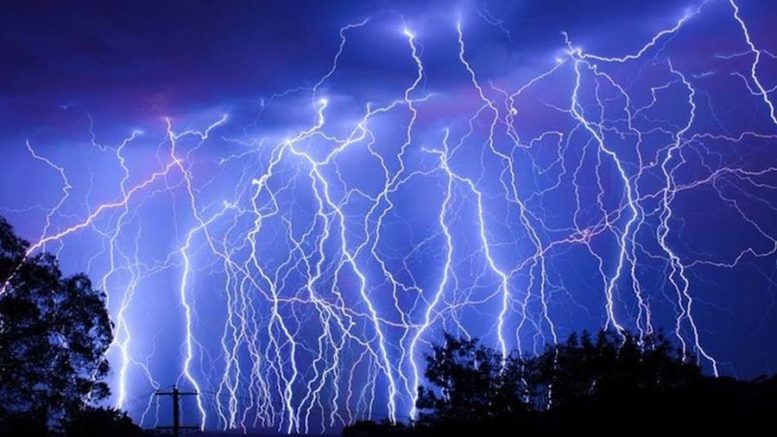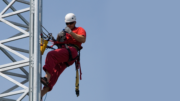Because, that’s not scary. But really, don’t worry. The amount of electricity in a TV broadcast by the time it gets to you is about 1/10,000 of the power required to run a flashlight. It’s tiny. It’s really not something that’s going to hurt you.
Explaining this a bit more
In order to understand how broadcasting works and why it’s basically wireless electricity, you need to look back to the 19th century. Electricity was a pretty hot topic back then. Scientists were just learning how to create electrical currents using magnets and motion, and there was a big push to try to understand all the things electricity could do.
The early days of radio
Since lightning and electricity are the same thing (as proven by Ben Franklin in that experiment everyone learned about in grade school) the scientists of the day knew that electricity could travel through the air. After a lot of experimenting, they figured out that you could create tiny little bits of electricity that were not enough to kill you but were enough that the electrical current could jump from place to place. This would have been nothing but a curiosity if it weren’t for one thing – that current could carry information.
The history of radio in the 19th century is a history of dozens of pioneers working all over the world at the same time. Each person contributed a little bit and radio technology soon took off. It was about 1875 when several inventors proved that if you put some sort of unique characteristic into an electrical signal and pushed it out into open air, you could detect that signal over a distance. The Italian Guglielmo Marconi is generally credited with the first commercially viable system to do this, but his system was nothing more than the dots and dashes of a telegraph, put over radio waves. It would be 30 years or so before the technology existed to send voices over radio, and another 20 after that until television became possible.
How radio waves are unique
All of it comes down to that unique property of radio waves, that you can build a signal into them and they keep that signal. Unfortunately though, as that signal travels, it loses strength. A broadcast signal that starts out at 50,000 watts is down to a few watts within the first mile. It’s down to ten-thousandths of a watt within 50 miles. Amazingly, even though it gets weaker and weaker, the electricity that’s broadcast keeps the signal intact. Eventually the signal get incredibly weak. The noise that’s all around us covers it up. That’s pretty impressive.
Eventually that electrical signal hits something that conducts electricity better than air does. We call that thing an antenna. The electricity transfers from the air to that antenna and then into your TV. The TV separates out the signal that you want to watch. The TV temporarily all the other channel signals that are coming in at the same time. Only the channel you want is important at that moment. It then decodes it, and bingo — TV. That’s a very simple explanation of how it happens, but it’s enough for this article.
By the way…
Solid Signal sponsors thousands of tutorial articles like this one. At Solid Signal you can get all the accessories you need. It doesn’t matter what kind of wireless electricity you work with. Shop now to support educational content like this.





